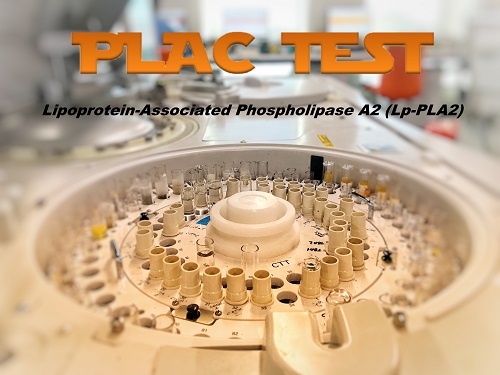Turkey's

Reference Laboratory
Services
Menu
Drug Levels
Microbiology
Clinical Biochemistry
Congenital Metabolic Disorders
Haematology Laboratory
Prenatal Screening Tests
Molecular Microbiology
Allergies
Transfusion Centers
LabBlog!

27 Ekm.22
Mevsimsel grip hastalığının etkenlerinden olan Influenza A ve B, Koronavirüs hastalığının etkeni SARS-CoV-2 virüsü, Solunum sinsityal virüsü enfeksiyonu etkeni RSV, Adenoviral solunum yolu enfeksiyonları etkeni olan adenovirüslerin hızlı tanısını sağlayan bir antijen testidir.

18 Tem.22
İnsanlarda ilk defa 1970 yılında Kongo Demokratik Cumhuriyeti’nde tespit edilmiştir. Sonrasında Orta ve Batı Afrika’daki ülkelerde görülen bu hastalığın sıklığı tam olarak bilinmemekle birlikte Kongo Demokratik Cumhuriyeti’nde 2005’e kadar yıllık 1000’e yakın olgu bildirilmiştir. Hastalık dönem dönem Afrika kıtasından enfekte hayvanlar ve insanlar aracılığıyla diğer kıtalara yayılmakta ve buralarda küçük küçük salgınlar yapmaktadır.

14 Ock.22
Genetik bir miras olarak ebeveynlerimizden aldığımız DNA’mızda bizlere ait bireysel özellikleri içeren tüm bilgiler bulunmaktadır. Bu bilgiler kan grubu, boy, kilo gibi bireysel özelliklerimizden, diyabet, kanser, kardiyovasküler hastalıklar gibi yüzlerce farklı duruma yatkınlık yada direnci belirleyen özelliklerle ilişkilidir. DNA’mızdaki bu bilgilerin çevresel faktörlerle etkileşmesi sonucu kişisel özelliklerimiz ve hastalıklar ortaya çıkabilmektedir.

22 Ara.21
PLAC TEST (Lp- PLA2 Aktivitesi) Kalp Hastalığı Riskinizi Biliyor musunuz ?
PLAC testi; kanda Lp-PLA2 enzim aktivitesini ölçen ve koroner kalp hastalığı riskini tahmin etmek için kullanılan bir belirteçtir.
Drug Levels
Importance of LC-MS/MS in the Analysis of Immunosuppresive Drugs
Immunosuppressive drugs are generally used following transplantation to prevent rejection and are also frequently used in the treatment of certain autoimmune diseases. Therapeutic Level Monitoring (TLM) of some of these drugs will prevent intoxication and will eliminate risk of rejection due to insufficient dosages. Immunassay methods such as EMIT, ACMIA, CEDIA, CMIA, FPIA or ELISA are frequently used to establish blood medication levels while analytical methods such as HPLC, LC-MS/MS and GC-MS are used in the clinical laboratory. Selectivity, precision and sensitivity of the method selected, followed by ease of operation and compatibility with automation are among the first characteristics to look for in the analysis of medication levels.
Because of its sensitivity and specificity, LC-MS/MS is a preferred method in drug analyses. As is in immunassay methods, the most important factor behind this preference is that it will not cross-react with inactive drug metabolytes. Consequently, patient results obtained by means of LC-MS/MS systems are lower than patient results as obtained through immunassay methods and therefore, any results obtained by means of different analytic systems should certainly not be compared with one another. Due to a positive bias with immunassay methods, it should be noted that inappropriate drug dosages may be selected in TLM. Being a means specifically appropriate for individualised treatment, TLM is not a method for identifying drug levels alone.
In addition to the above listed drugs, our laboratory also processes for Busulfan levels with LC-MS/MS.
In addition to the above listed drugs, our laboratory also processes for Busulfan levels with LC-MS/MSBusulfan; is a bifunctional alkylating agent with cytotoxic characteristics used before haemopoetic stem cell transplant for the abblation of bone marrow. Both the success of stem cell transplant as well as the probability of serious toxicity risk are related to the amount of Busulfan the patient is to receive.
An overdose can lead to Hepatic Veno-Occlusive Disease, or HVOD, while an insufficient dose may result in an unsuccesful transplant. In order to determine whether or not a patient under Busulfan treatment is receiving the correct dosage, samples are taken from the patient at different intervals so that the proper dosage may, in fact, be determined. A dosage may be suggested as per an Area Under Curve, or AUC, measurement. Information regarding the taking of samples for a Busulfan Test may be requested from our laboratory.
Because of its sensitivity and specificity, LC-MS/MS is a preferred method in drug analyses. As is in immunassay methods, the most important factor behind this preference is that it will not cross-react with inactive drug metabolytes. Consequently, patient results obtained by means of LC-MS/MS systems are lower than patient results as obtained through immunassay methods and therefore, any results obtained by means of different analytic systems should certainly not be compared with one another. Due to a positive bias with immunassay methods, it should be noted that inappropriate drug dosages may be selected in TLM. Being a means specifically appropriate for individualised treatment, TLM is not a method for identifying drug levels alone.
In addition to the above listed drugs, our laboratory also processes for Busulfan levels with LC-MS/MS.
- Cyclosporin A
- Everolimus
- Sirolimus
- Tacrolimus
In addition to the above listed drugs, our laboratory also processes for Busulfan levels with LC-MS/MSBusulfan; is a bifunctional alkylating agent with cytotoxic characteristics used before haemopoetic stem cell transplant for the abblation of bone marrow. Both the success of stem cell transplant as well as the probability of serious toxicity risk are related to the amount of Busulfan the patient is to receive.
An overdose can lead to Hepatic Veno-Occlusive Disease, or HVOD, while an insufficient dose may result in an unsuccesful transplant. In order to determine whether or not a patient under Busulfan treatment is receiving the correct dosage, samples are taken from the patient at different intervals so that the proper dosage may, in fact, be determined. A dosage may be suggested as per an Area Under Curve, or AUC, measurement. Information regarding the taking of samples for a Busulfan Test may be requested from our laboratory.


